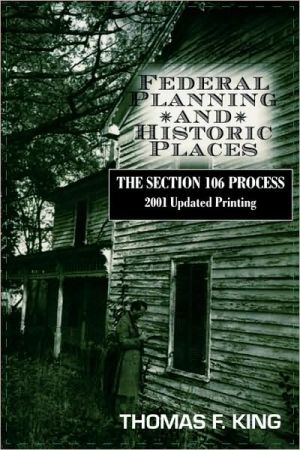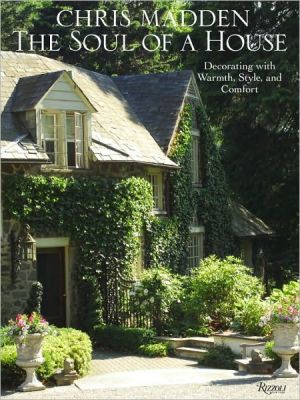Federal Planning And Historic Places
Section 106. A critical section of an obscure law, the National Preservation Act. It has saved thousands of historic sites, archeological sites, buildings, and neighborhoods across the country from destruction by Federal projects. And it has let even more be destroyed, or damaged, or somehow changed. It is the major legal basis for a multi-million dollar 'cultural resource management' industry that provides employment to thousands of archeologists, historians, and architectural historians. It...
Search in google:
Section 106. A critical section of an obscure law, the National Preservation Act. It has saved thousands of historic sites, archeological sites, buildings, and neighborhoods across the country from destruction by federal projects. And it has let even more be destroyed, damaged, or somehow changed. Tom King de-mythologizes Section 106, explaining its origins, its rationale, and the procedures that must be followed in carrying out its terms.
Pt. 1What is It and Where Did It Come From?Ch. 1106 of What?11Ch. 2Evolution of a Process15Pt. 2Section 106 in the New Millennium: Playing the Game Under the 1999 RegulationPreface25Ch. 3What's it All About; When Does It Happen; and Who Plays?27Ch. 4The Game's Afoot! Initiating Review33Ch. 5Finding What May Be Affected41Ch. 6Evaluation55Ch. 7The Results of Identification and Evaluation63Ch. 8Will There Be an Adverse Effect?67Ch. 9"Resolving Adverse Effect;" MOA or ACHP Comment75Ch. 10"Substituting" NEPA for Section 10679Ch. 11The Rest of the Regulation85Ch. 12In Summary97Pt. 3Some Tools of the TradeCh. 13Public Participation103Ch. 14Writing a Memorandum of Agreement: Heloise's Expanded Helpful Hints115Ch. 15The Invented Wheels: Standard Stipulations125Epilogue: The Future of Section 106175Appendix AA Walk Through the ACHP's Archeological Guidance181Bibliography191Index193
\ American AntiquityThomas F. King, a long-standing leader in the ever-growing and transforming field of Cultural Resource Management (CRM), has done a great service to the historic preservation community by writing this book.... Any archaeologist who works in CRM or who is responsible for teaching students about the realities of practicing archaeology in the U.S. today should own this book. AltaMira Press should be congratulated for publishing books like this one in its Heritage Resource Management Series and filling a publication void.\ — Michael D. Petraglia\ \ \ \ \ High Plains Applied AnthropologistWhat makes this book especially valuable is the author. Thomas F. King has been involved in the Section 106 process since its inception, has taught section 106 classes for years, and has probably thought more about the regulation's evolution than any other person alive.\ — Darby C. Strapp\ \ \ Illinois ArchaeologyUnique and valuable... the book for all who deal with Section 106 regulations to read and reread.\ — Thomas E. Emerson, (Illinois Transportation Archaeology Research Program, University of Illinois at Urbana-Champaign)\ \ \ \ \ Journal Of The Society For Industrial Archaeology[King's] analogy between chronic disease and regulatory procedures is funny as well as sharp-edged .... The goal of AltaMira's Heritage series includes producing 'practical guides designed to help those who work in cultural resource management, environmental management, heritage preservation, and related subjects.' This goal has been met by King's contribution.\ — Susan R. Martin\ \ \ \ \ Nebraska History[Tom King] very nearly manages to bring what can be a complicated and arcane process into lay terms. Laced with humor, thought-provoking (and sometimes controversial) prose, and simplified examples, Federal Planning and Historic Places should assist anyone who wishes to learn about the 106 process.\ — Bill Callahan, State Historic Preservation Office, NSHS\ \








